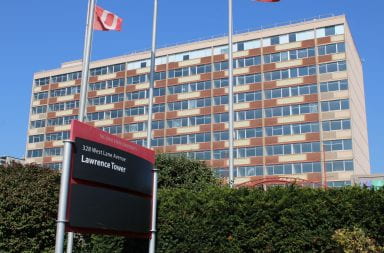The red squirrel on Mount Graham in Arizona is in the middle of a controversy.Ohio State and environmental groups, including the Student Environmental Action Coalition, have data on the squirrel population on Mount Graham, the site of the controversial Large Binocular Telescope. But neither match the results of surveys by the Arizo
na Game and Fish Department.The LBT is being built by the University of Arizona. OSU is negotiating the purchase of a one-eighth share in the project.Those who object to OSU’s involvement in the project said it will harm the wildlife on the mountain, particularly the endangered red squirrel.A publication by the Mount Graham Coalition, an environmental group in Arizona, said the squirrel population on the mount has decreased.’It does not help the squirrel whatsoever,’ said SEAC member Diane Mong. ‘How can taking away their habitat help them?’However, a report submitted to the OSU Board of Trustees for the astronomy department by Cochran Public Relations, said that the squirrel population has nearly doubled since 1989.In addition, the U of A cites a graph provided by the United States Forest Service that shows a steady increase in squirrel population in 1990 and 1991 that became more level through 1996. ‘The squirrel population has constantly risen for six years,’ said Matt Smith, U of A spokesman for the LBT. However, the Arizona Game and Fish Department completes biannual red squirrel surveys on Mount Graham and said that squirrel population has remained steady for the past seven years and that both groups are slanting the results.’Overall, we haven’t seen much of a difference,’ said Terry Frederick, a biologist for the Arizona Game and Fish Department. ‘Those estimates are a result of somebody interpreting the data.’Frederick said she just finished a fall survey and could not release the actual results but that they are similar to previous results.The increase in population in 1990 and 1991 can be attributed to a food shortage in 1989, Mong said. Squirrel population increased as their food supply returned, she said.Smith said the U of A has a team of biologists working on the mountain daily to monitor the squirrel.Robin Silver, spokesman for the Marcopa Audubon Society in Arizona, said the squirrel population may be harmed in the future. Silver said the ‘edge effect,’ which is when areas surrounding cleared acres are harmed, is a cumulative result of forest clearin
g.’In this particular area, this is some of the most intact canopy in the southwest,’ he said.Silver said opening the canopy and exposing the area to light will harm the area surrounding the telescope. Andreas Berlind, a graduate student in astronomy, said the U of A is participating in reforestation programs and monitors the red squirrels as part of a management program. The original telescope site was moved because it was near squirrel feeding sites, Berlind said.![]()
COOPER


